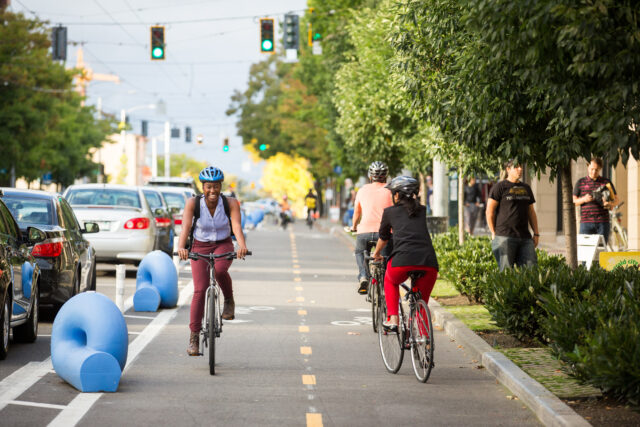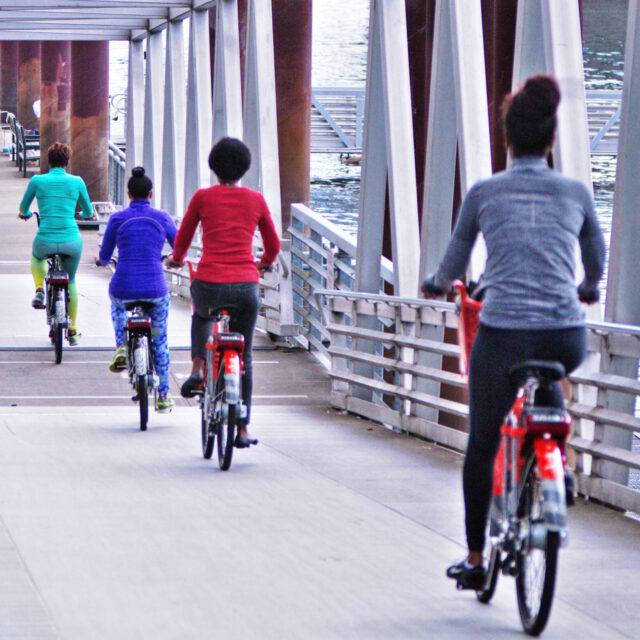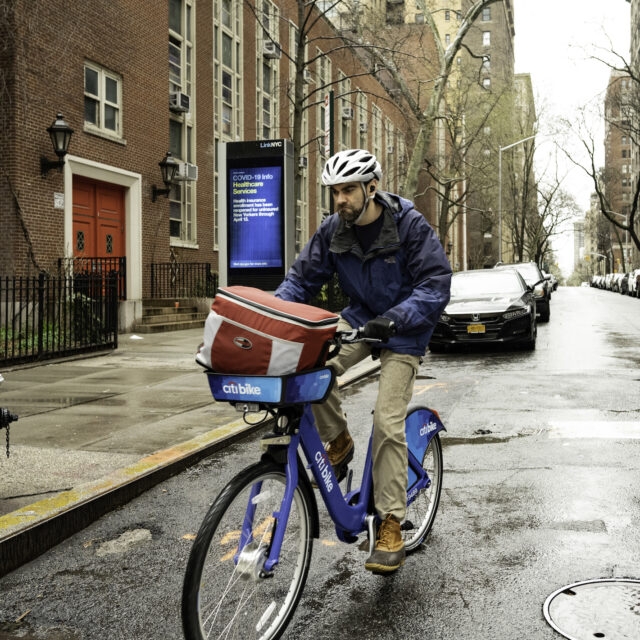Bike Lanes Aren’t Associated With Displacement
by Kiran Herbert, Communications Manager
July 2, 2021
Bike lanes are often linked to the uprooting of BIPOC and low-income communities. New research offers a different perspective.

A new study has found that there is no correlation between the installation of bicycle facilities and changes in the socioeconomic makeup of those neighborhoods. Put simply, bike lanes and trails aren’t correlated with the displacement of BIPOC and low-income communities. That doesn’t mean that bike lanes don’t lead to gentrification, and in that sense have negative effects on these communities, just that they’re not a factor in driving folks out.
The study’s researchers—Nicholas N. Ferenchaka of the University of New Mexico, Albuquerque, and Wesley E. Marshall of the University of Colorado, Denver—longitudinally assessed 11,010 miles of bicycling facilities over ten years (2010–2019) in 29 U.S. cities, primarily focusing on residential neighborhoods. The study included the examination of thousands of Google Earth satellite images to determine what kind of bike infrastructure was installed and when, allowing for a more nuanced look at transportation changes in a given area.
As Kea Wilson reports on Streetsblog, the study also boasts a comprehensive literature review section that provides background information on the harmful effects of highways and explores some of the more anecdotal aspects of gentrification other than simple displacement. Despite its findings when it comes to the lack of displacement of BIPOC and low-income residents, the study far from vindicates U.S. transportation planners. Rather, it pushes the reader to consider the meaning of “mobility justice,” as well as how the quantitative nature of the study limits its findings.
“When we’re looking at overall bike facilities, people of color are getting the lowest rates of bike facility installation,” Ferenchak told Wilson. “But, collectively, lower-income people [of all races] see the highest rates. The big question still hanging in the air is, does the supply we’re seeing in these various neighborhoods actually meet the demand of those residents? Could it be that less bike facilities are exactly what some of these neighborhoods want? Are [BIPOC communities] being meaningfully involved in the transportation planning process? There are definitely still mobility justice issues we need to consider.”
Though the study prompts more questions than it answers, it’s undoubtedly moving the conversation forward. As Ferenchak and Marshall’s research shows, there’s much work to be done when it comes to mobility justice, and gentrification is a multi-faceted issue. For advocates concerned about bike lanes forcing historically marginalized groups out, however, the paper is a breakthrough.
“If displacement is our primary concern, yeah, we can go ahead and build the bike lanes,” Ferenchak told Wilson. “We know we’re not going to be displacing people just by doing that.”
Read more over on Streetsblog and access the full study here.
The Better Bike Share Partnership is funded by The JPB Foundation as a collaboration between the City of Philadelphia, the National Association of City Transportation Officials (NACTO) and the PeopleForBikes Foundation to build equitable and replicable bike share systems. Follow us on Facebook, Twitter and Instagram or sign up for our weekly newsletter. Got a question or a story idea? Email kiran@peopleforbikes.org.



